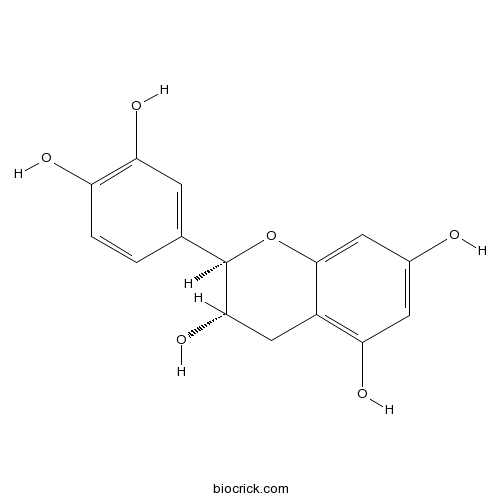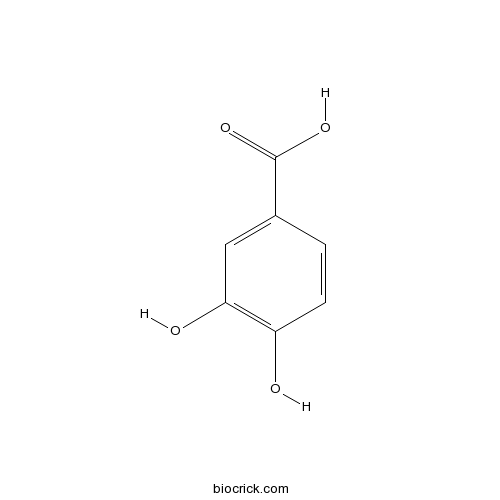Sanguisorba officinalis
Sanguisorba officinalis
1. The products in our compound library are selected from thousands of unique natural products; 2. It has the characteristics of diverse structure, diverse sources and wide coverage of activities; 3. Provide information on the activity of products from major journals, patents and research reports around the world, providing theoretical direction and research basis for further research and screening; 4. Free combination according to the type, source, target and disease of natural product; 5. The compound powder is placed in a covered tube and then discharged into a 10 x 10 cryostat; 6. Transport in ice pack or dry ice pack. Please store it at -20 °C as soon as possible after receiving the product, and use it as soon as possible after opening.
Natural products/compounds from Sanguisorba officinalis
- Cat.No. Product Name CAS Number COA
-
BCN1688
Catechin154-23-4
Instructions

-
BCN5290
Ziyuglycoside I35286-58-9
Instructions

-
BCN5291
Ziyuglycoside II35286-59-0
Instructions

-
BCN1334
Pomolic acid 28-O-beta-D-glucopyranosyl ester83725-24-0
Instructions

-
BCN6433
Kajiichigoside F195298-47-8
Instructions

-
BCN4537
3,4-Dihydroxybenzoic acid99-50-3
Instructions

Aryl-tetralin-type lignan isolated from Sanguisorba officinalis.[Pubmed: 29945462]
None
Anti-bacterial effects of components from Sanguisorba officinalis L. on Vibrio vulnificus and their soluble epoxide hydrolase inhibitory activity.[Pubmed: 29790361]
None
Anti-allergic inflammatory components from Sanguisorba officinalis L.[Pubmed: 29759725]
Sanguisorba officinalis L. was well known as a traditional herbal medicine to treat inflammation and allergic skin diseases. The aim of this research was to indentify compounds with anti-allergic inflammatory property. Twenty-five compounds (1-25) were isolated from S. officinalis including two new compounds (1 and 8), and their chemical structures were identified by NMR and ESIMS analysis. Consequently, the anti-allergic inflammatory activities of these isolates were investigated by inhibiting β-hexosaminidase and IL-4 production in PMA/A23187-stimulated RBL-2H3 cells. Compounds 6, 8, 13, 17-18 and 25 significantly inhibited β-hexosaminidase release and IL-4 production. Additionally, compounds 8, 17 and 25 effectively suppressed the activation of NF-κB and NF-κB p65 translocation into the nucleus. Anti-inflammatory effects of isolated compounds were evaluated in LPS-stimulated RAW264.7 macrophages, and they showed dramatic inhibition on LPS-induced overproduction of nitric oxide (NO) and TNF-α. Consistently, the protein levels of iNOS and COX-2 were remarkably decreased by the single compounds 8, 13 and 25. These results showed that compounds 8, 13 and 25 from S. officinalis may have a therapeutic potential for allergic inflammatory diseases.
Chemical constituents from Sanguisorba officinalis L. and their inhibitory effects on LPS-stimulated pro-inflammatory cytokine production in bone marrow-derived dendritic cells.[Pubmed: 29732490]
Sanguisorba officinalis L. (Rosaceae) is a perennial herbaceous plant and its roots have been used as an important astringent medicine in Eastern Asian countries over many thousand years. In this phytochemical research, 23 compounds (1-23) were isolated from the roots of S. officinalis. Their chemical structures were identified by extensive spectroscopic methods, including 1D and 2D NMR experiments. The anti-inflammatory effects of extracts and isolated compounds were investigated by measuring the production of pro-inflammatory cytokine IL-12 p40, IL-6 and TNF-α in LPS-stimulated bone marrow-derived dendritic cell. Compounds 1, 3, 7-8, 11-14 revealed promising anti-inflammatory effects. These results suggested that some phenolic compounds and monoterpenoids from S. officinalis could be potential candidates for anti-inflammatory treatments.
Differential effect of drought regimes on the seedling performance of six floodplain grassland species.[Pubmed: 29577528]
The performance of seedlings is crucial for the survival and persistence of plant populations. Although drought frequently occurs in floodplains and can cause seedling mortality, studies on the effects of drought on seedlings of floodplain grasslands are scarce. We tested the hypotheses that drought reduces aboveground biomass, total biomass, plant height, number of leaves, leaf area and specific leaf area (SLA), and increases root biomass and root-mass fraction (RMF) and that seedlings from species of wet floodplain grasslands are more affected by drought than species of dry grasslands. In a greenhouse study, we exposed seedlings of three confamilial pairs of species (Pimpinella saxifraga, Selinum carvifolia, Veronica teucrium, Veronica maritima, Sanguisorba minor, Sanguisorba officinalis) to increasing drought treatments. Within each plant family, one species is characteristic of wet and one of dry floodplain grasslands, confamilial in order to avoid phylogenetic bias of the results. In accordance with our hypotheses, drought conditions reduced aboveground biomass, total biomass, plant height, number of leaves and leaf area. Contrary to our hypotheses, drought conditions increased SLA and decreased root biomass and RMF of seedlings. Beyond the effects of the families, the results were species-specific (V. maritima being the most sensitive species) and habitat-specific. Species indicative of wet floodplain grasslands appear to be more sensitive to drought than species indicative of dry grasslands. Because of species- and habitat-specific responses to reduced water availability, future drought periods due to climate change may severely affect some species from dry and wet habitats, while others may be unaffected.
Phytotherapeutic Activities of Sanguisorba officinalis and its Chemical Constituents: A Review.[Pubmed: 29433389]
None
Burn wound healing potential of a polysaccharide from Sanguisorba officinalis L. in mice.[Pubmed: 29425875]
Sanguisorba officinalis L. is widely used in China to treat various wounds, particularly burns. The present study was carried to evaluate the healing efficacy of a purified polysaccharide (SOP) from the roots of S. officinalis L. on burn wound models in mice. The results indicated that oral administration of SOP (50 and 200mg/kg) significantly stimulated wound contraction and reduced epithelialization time as compared to control group, which might be mediated by promoting collagen synthesis as evidenced by an increase of hydroxyproline content. Elevation of IL-1β and VEGF content was also observed in mice following SOP treatment, which in turn facilitate epithelization and angiogenesis. Besides, histopathological examination of the wound tissues in the SOP-treated animals showed collagen deposition and epidermal formation. It may be concluded that the enhancement of burn wound healing by SOP might be due to promotional collagen synthesis and angiogenesis during skin wound repair as a result of the stimulation of hydroxyproline, IL-1β and VEGF production. The excellent wound-healing activities of SOP provide a scientific rationale for the development of plant-based product in the management of wounds.


